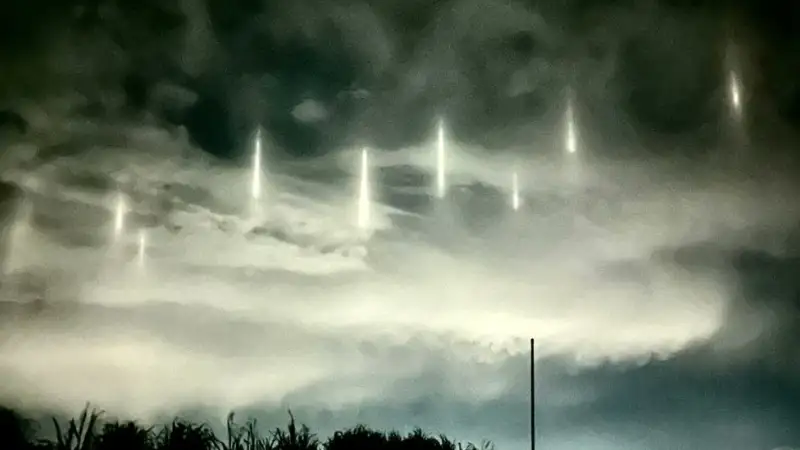Social media on Thursday went into a frenzy after pillars of light were witnessed in the night sky of Japan. Japan light pillars became one of the trending topics on social media with netizens around the wondering what exactly Japan witnessed or what is Japan's pillars of light. In the Viral Japan light pillars photo, it can be seen multiple rays of light pierce the sky or cloud. This sparks speculations and conspiracy theories that aliens may have invaded Japan.
As per reports, the phenomenon occurred near Tottori prefecture, Japan, on May 11, prompting residents to speculate about its origins. The photos were taken over the sky of the coastal town of Daisen in Japan’s Tottori prefecture. As the post went viral with over 12 million views, another person shared a photo that showed similar pillars of light, this time over the Nariishi Beach in Kotoura Town, located just 12.7km east of Daisen.
A local named Maashii clicked the first photo. Maashii was quoted by a Japanese website saying that he has only seen these types of mythical-looking lights three or four times since he moved to Daisen nine years ago. When he spotted them at 10 pm on May 11, he quickly took out his phone and captured some pictures.
What is Japan's Light of pillars or the truth behind Japan's Light Pillars
As per reports, Japan's light of pillars is a natural and scientific phenomenon. Therefore, fans comparing Japan pillar lights to an alien invasion are nothing but conspiracy theories. As per Japanese media reports, many coastal towns in Japan see the emergence of similar 'pillars of light'. They occur when overnight temperatures come down and the water vapour in the air forms into lines of ice crystals.
On very rare occasions, the weather conditions are such that the crystals are formed but there is no precipitation. As a result, the crystals stand suspended in the air. The light from the shipping boats hits these crystals, which in turn reflect the light and shine brightly as if they are light rods. This phenomenon is called 'isaribi kochu' which translates to 'fish-attracting light pillars.'
